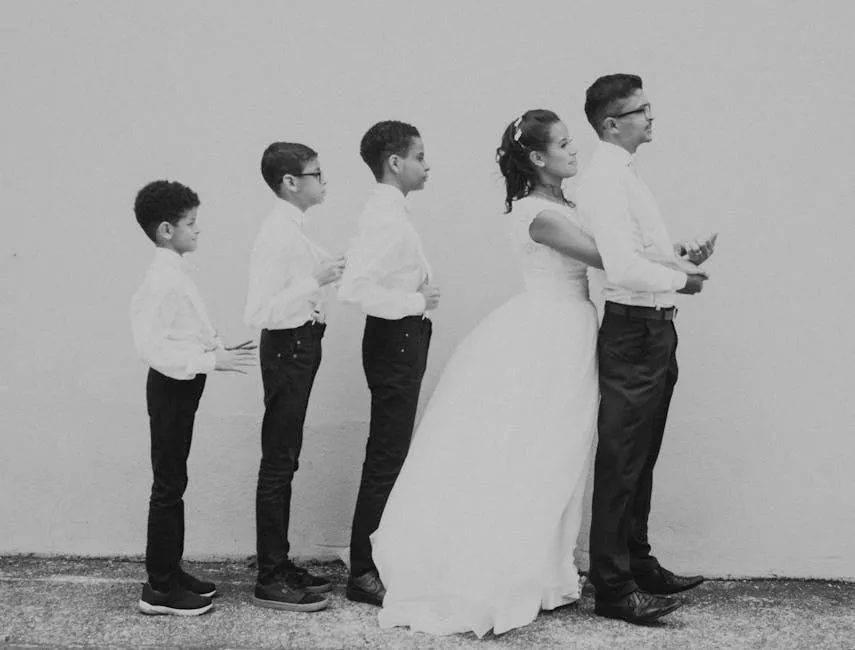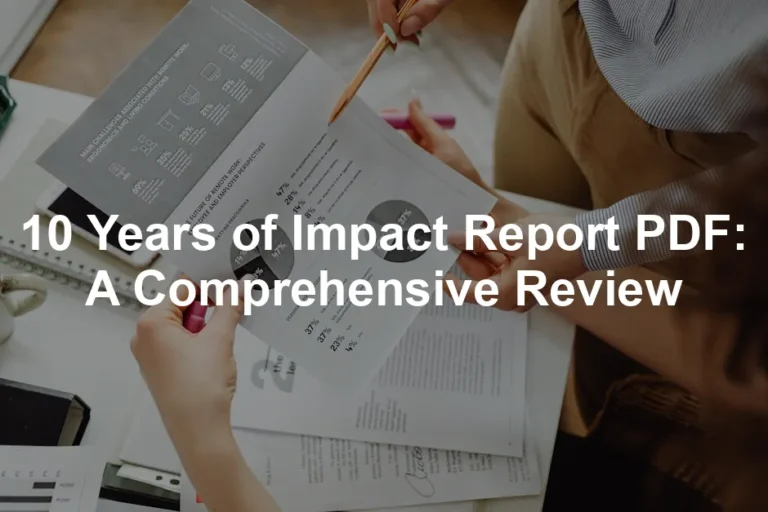Introduction
Divorce isn’t just a legal process; it’s a significant life event. In Utah, understanding divorce statistics is crucial for many reasons. These numbers offer insights into marital stability and family dynamics. They help residents make informed decisions about relationships and provide a snapshot of societal trends.
In this article, we’ll break down Utah’s divorce statistics, highlighting key trends and figures. Expect to uncover current rates, historical data, and factors influencing these trends. You’ll find that divorce rates in Utah can be quite revealing, especially when viewed through the lens of the state’s unique cultural and socioeconomic characteristics.
Utah is known for its strong family values and a predominant religious culture, primarily influenced by the Church of Jesus Christ of Latter-day Saints. This backdrop plays a significant role in shaping attitudes toward marriage and divorce. Yet, divorce rates tell a different story. They reflect the complexities of modern relationships, economic pressures, and changing social norms.
Overall, this article will guide you through the landscape of divorce in Utah. We aim to provide a comprehensive overview, making sense of the statistics while keeping things light-hearted and engaging. So, grab a cup of coffee, and let’s dive into the numbers that matter in the Beehive State.

Utah’s Divorce Rate Overview
Current Divorce Rate
As of 2024, Utah’s divorce rate stands at 3.3 per 1,000 people. This figure is relatively stable compared to previous years. For context, the national average sits at about 2.3 per 1,000 people, which means Utah’s rate is noticeably higher.
Historically, divorce rates in Utah have fluctuated. In the 1990s, the rate peaked at approximately 5.3 per 1,000 people. Since then, there has been a gradual decline. For instance, in 2018, the rate reached 3.7 per 1,000, before decreasing to around 3.3 in 2023 and early 2024. This overall downward trend in divorce rates suggests a shift in societal attitudes and perhaps a change in the dynamics of marriage within the state.
Interestingly, while Utah’s divorce rate is high, it’s essential to contextualize it. Many couples in the state are relatively young when they marry. The average marriage age is 23 for men and 21 for women. These younger marriages often face unique challenges. The pressures of financial stability, parenting, and career aspirations can strain relationships, leading to higher divorce rates.
If you’re looking to understand more about relationships and effective communication, consider picking up The 5 Love Languages: The Secret to Love That Lasts by Gary Chapman. This book can help couples better understand each other’s needs and strengthen their relationships.
In summary, Utah’s current divorce rate reflects both cultural expectations and economic realities. Understanding these numbers helps paint a clearer picture of marital life in Utah, revealing the intricate dance between commitment and the stresses that challenge it.

Historical Context
From 1990 to 2021, Utah’s divorce rates have transformed significantly, reflecting broader societal changes. In 1990, the divorce rate hit a peak of 5.1 divorces per 1,000 inhabitants. Fast forward to 2021, and that number had dropped to 3.3, showcasing a clear trend of decline.
Key milestones include the peak divorce rate in 2018, which reached 3.7 per 1,000, before stabilizing in recent years. This decline indicates not just a shift in marital dynamics but also a growing awareness of relationship health.
Visualizing these changes can help contextualize the statistics. A simple timeline or graph would illustrate the downward trend over the decades, making it easier to digest. The following key points summarize the historical context:
- 1990: 5.1 per 1,000
- 2000: 4.5 per 1,000
- 2010: 4.1 per 1,000
- 2018: Peak at 3.7 per 1,000
- 2021: 3.3 per 1,000
This timeline underscores a significant decline in divorce rates, suggesting that Utahns are increasingly focused on building lasting marriages. Understanding this context is essential for those exploring the intricate web of marriage and divorce in the Beehive State.

Personal Factors
When it comes to divorce in Utah, personal factors play a significant role. Demographics such as age, education, and gender heavily influence who initiates divorces. Notably, women take the lead in this arena, initiating approximately 70% of divorces. This trend hints at evolving gender roles and expectations in marriage.
The average age of marriage in Utah is around 23 for men and 21 for women. This youthful start often leads young couples straight into financial and emotional pressures. It’s no surprise that marrying young can correlate with higher divorce rates. Young love may spark brightly, but financial instability and parenting responsibilities can quickly dim that flame.
Couples who marry in their late twenties or early thirties tend to experience more stable marriages. This delay allows for personal growth and maturity, leading to better communication and conflict resolution skills. So, if you’re considering tying the knot, keep in mind: patience might just lead to a happier union.
If you want to explore how to improve your relationship, consider the Couples Therapy Workbook: A Guide for Couples to Improve Their Relationship by John A. Smith. This resource can provide valuable strategies to enhance communication and connection.

Breakdown of Divorce Rates: Geographical Insights
Divorce Rates by City
Utah’s divorce rates reveal fascinating geographical insights. For instance, Provo-Orem and Logan have the highest divorce rates, with approximately 6-6.5% of their populations being divorced. In contrast, Salt Lake City, despite its significant size, doesn’t top the list. Why the difference? Demographic trends and cultural factors play a crucial role.
In Provo-Orem, a predominantly younger population faces pressures like student debt and early parenting. These factors can strain relationships, contributing to their higher divorce rates. On the other hand, Salt Lake City boasts a more diverse population with varied socioeconomic backgrounds, which might mitigate the factors leading to divorce.
Logan, known for its close-knit community and university presence, also experiences high divorce rates. Young adults often marry while still in school, leading to financial stress and lack of life experience. The pressures of balancing education and family life can prove overwhelming.
Understanding these city-specific trends sheds light on how local culture and demographics shape marital outcomes. It’s essential to recognize that while certain areas may struggle with higher rates of divorce, the underlying causes often intertwine with economic conditions and social expectations.
Analyzing divorce rates by city helps us appreciate the unique challenges couples face in different environments. By fostering awareness, we can better support individuals navigating these turbulent waters.

Divorce Rates by County
Utah’s divorce rates vary significantly across its 29 counties. Understanding these rates offers insight into regional differences that can inform community support and resources. The highest divorce rates are reported in the following counties:
- Grand County – 21%
- Carbon County – 17%
- Weber County – 14%
- Uintah County – 13.2%
- Kane County – 12.5%
Conversely, the counties with the lowest divorce rates include:
- Morgan County – 5.9%
- Utah County – 6.9%
- Cache County – 7%
- Wayne County – 8.3%
These disparities can be attributed to several factors. For instance, Grand County, with its high divorce rate, may be influenced by transient populations related to tourism. In contrast, counties like Morgan and Utah, characterized by strong economic opportunities and lower poverty rates, tend to support more stable family structures.
Population size and economic conditions also play crucial roles. Areas with robust job markets often experience lower divorce rates, as financial stress is a known contributor to marital strain. Furthermore, cultural factors, such as community support and local values, can either promote or challenge marital stability.

Divorce and Families in Utah
Impact on Families with Children
Around 60% of divorces in Utah involve children. This statistic highlights a significant social concern, as custody arrangements often complicate the emotional landscape for families. When parents split, children typically live with their mothers—38.6% of divorced women have at least one child under 18, compared to only 20.9% of divorced men. This discrepancy indicates a prevalent trend in post-divorce family structures that can have lasting effects on children’s welfare.
Interestingly, understanding divorce statistics in California can provide additional context on how regional differences impact family dynamics across the United States.
Exploring divorce statistics in different states, like California, can shed light on the varying challenges families face during divorce. Learn more about divorce statistics in California here.
The implications of these statistics are profound. Custody arrangements can lead to challenges in co-parenting, emotional distress for children, and financial strain on single-parent households. The transition from a two-parent to a single-parent household can be a tumultuous time, and the well-being of children often hinges on the ability of parents to cooperate amicably.
Moreover, traditional gender roles appear to be shifting. Women are increasingly taking charge of family decisions post-divorce, often becoming the primary caregivers. This shift emphasizes the need for supportive resources for both custodial and non-custodial parents to navigate these changes successfully.
Anecdotal evidence suggests that children from divorced families may experience difficulties in their own relationships later in life. Counseling and community support can play a vital role in helping both parents and children adjust to these new dynamics. By fostering open communication and mutual respect, families can work towards healthier outcomes, regardless of marital status.
If you’re looking for ways to heal after divorce, I highly recommend Healing After Divorce: A Guide to Finding Your Way by Laura Smith. This book provides valuable insights and strategies for rebuilding your life post-divorce.
In summary, the impact of divorce on families in Utah is significant, particularly for children. Understanding these statistics can guide community resources and support systems, aiming to mitigate the challenges faced by families in transition.

Ethnic and Religious Breakdown
Utah’s divorce rates aren’t just numbers; they reflect the intricate tapestry of its diverse population. When we examine divorce trends among different ethnic groups, the findings are intriguing. According to available data, the highest divorce rates occur among African Americans at approximately 15.7%, followed closely by Whites at 12.3%. The Hispanic community also sees notable rates, though specific figures remain less documented.
Interestingly, religious affiliation plays a significant role in marital stability. The Church of Jesus Christ of Latter-day Saints (LDS) dominates Utah’s landscape, and its teachings emphasize family unity. Consequently, research suggests that those who actively engage in their faith experience lower divorce rates compared to their non-religious counterparts. Surveys indicate that among a sample of Christians, only 7% reported being divorced, highlighting the protective effect of religious commitment.
However, this doesn’t mean that marriage in Utah is free from challenges. Individuals may enter marriage under the weight of high expectations, believing that faith alone will sustain their relationships. Yet, reality often presents hurdles, such as financial stress and personal issues, which can lead to marital breakdowns despite strong religious ties.
In Utah, cultural and religious nuances intertwine, creating a unique environment for marriage and divorce. By understanding these factors, we can appreciate the complexities behind the statistics and the stories they tell about the lives of Utah residents.

Evolving Trends in Divorce
Recent Changes Post-Pandemic
The COVID-19 pandemic acted like a magnifying glass, revealing cracks in many relationships across Utah and beyond. Nationally, divorce rates saw a noticeable uptick as couples faced unprecedented stress. In Utah specifically, the divorce rate has fluctuated but remains around 3.3 per 1,000 people as of 2024. This stability follows a slight decline during the initial phase of the pandemic, where many couples chose to weather the storm together.
Interestingly, one emerging trend is the rise of “gray divorce,” which refers to couples over 50 choosing to part ways. This phenomenon isn’t isolated to Utah; it’s a national trend. As life expectancy increases and societal norms shift, older couples reevaluate their marriages, often leading to separation. Surprisingly, many of these couples find themselves rediscovering independence after decades of partnership.
Moreover, the pandemic prompted a reassessment of marital expectations. Couples who previously relied on external social structures found themselves isolated, forcing them to confront unresolved issues. The result? Many couples couldn’t withstand the pressure and opted for divorce.

Future Predictions
Looking ahead, we can speculate on several trends that may shape Utah’s divorce landscape. As younger generations marry later in life, we might see a gradual decline in divorce rates. The average marriage age is inching upward, which suggests that individuals are prioritizing personal growth and stability before tying the knot.
Additionally, societal movements advocating for mental health and open communication in relationships may foster healthier marriages. As awareness around emotional well-being continues to grow, couples may find themselves better equipped to handle conflicts and challenges.
Potential legislative changes could also impact divorce rates. For instance, discussions around simplifying the divorce process—already quite streamlined in Utah—may encourage more individuals to seek amicable separations rather than prolonged, contentious battles.
In summary, the future of divorce in Utah is intertwined with cultural shifts, economic changes, and evolving societal norms. By keeping an eye on these trends, we can gain valuable insights into how marriages may fare in this unique landscape.

Conclusion
In reviewing Utah’s divorce statistics, we’ve unearthed a wealth of information. From ethnic and religious influences to evolving trends post-pandemic, each facet contributes to a broader understanding of marriage and divorce in the Beehive State.
Utah’s current divorce rate of 3.3 per 1,000 people may seem high, especially compared to the national average, but this statistic must be contextualized within the state’s cultural framework. With a predominantly young population marrying early, the challenges they face can lead to higher divorce rates.
Moreover, the protective impact of religious commitment can’t be overlooked. Individuals who actively engage in their faith often experience lower divorce rates, suggesting that community support plays a crucial role in marital success.
If you’re interested in understanding the financial aspects of divorce, check out Divorce & Money: How to Make the Best Financial Decisions During Divorce by H. Joseph. This book can provide essential insights for navigating the financial complexities that come with divorce.
As we move forward, it’s essential to recognize how societal changes, especially post-pandemic, are reshaping our understanding of relationships. By fostering open dialogue and mental health awareness, we can hope for a future where marriages are not only more resilient but also reflective of our evolving values.
In conclusion, Utah’s divorce statistics offer valuable insights into the dynamics of marriage and family life. Understanding these trends provides a clearer picture of the challenges and triumphs faced by couples in this unique state. By acknowledging these realities, we can better support families navigating the complexities of divorce.

FAQs
What is the current divorce rate in Utah?
As of 2024, Utah’s divorce rate stands at 3.3 per 1,000 people, reflecting a stable trend compared to previous years.
How does Utah’s divorce rate compare to other states?
Utah has one of the highest divorce rates in the nation, ranking eighth overall. This is significant when compared to the national average of approximately 2.3 per 1,000 people.
What factors contribute to higher divorce rates in Utah?
Key factors influencing higher divorce rates in Utah include cultural expectations, financial stress, and the challenges of early marriage. Additionally, personal factors such as age and education levels also play a role.
How do divorce rates in Utah affect families with children?
Approximately 60% of divorces in Utah involve children. This has significant implications for custody arrangements and the overall well-being of children, often leading to emotional and financial challenges.
What resources are available for those considering divorce in Utah?
Individuals considering divorce in Utah can access various resources, including legal aid, counseling services, and support groups designed to assist families during this transition. Local community centers and online platforms also offer valuable information and support.
Please let us know what you think about our content by leaving a comment down below!
Thank you for reading till here 🙂
All images from Pexels




